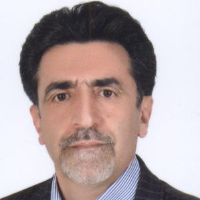Comparison of Surface, Drip and Water Box Irrigation Methods on the Establishment of Hawthorn Seedling for Controlling Desertification Phenomenon
Author(s):
Article Type:
Research/Original Article (دارای رتبه معتبر)
Abstract:
Introduction
The existence of 35 to 45 million hectares of desert areas in Iran and many restrictions such as lack of precipitation, have caused many challenges for the development of these areas. On the other hand, improper utilization of existing resources has resulted in desertification as a natural phenomenon, which is increasing annually. The activities that have been tracked down desertification decades ago have only managed to control a very small corner (about 9.1 million hectares) of these areas. Desertification is the consequence of two challenges of climate change and freshwater scarcity. In Iran, 43.7 million hectares are desert ecosystems in the wilderness of the country, of which about 20 million hectares of desert ecosystems are affected by wind erosion. Meanwhile, 4.6 million hectares in 183 districts in 82 counties and 18 provinces of the country are considered critical wind erosion centers. In general, natural and human factors are among the main origins of desertification. In arid and semi-arid areas due to lack of precipitation, water is the most important limiting factor for plant deployment. Due to the quantitative and qualitative limitations of water resources, the survival of plants in desert areas, mainly depends on the choosing appropriate irrigation method. The purpose of this study was to compare Water Box method, which is a particular form of irrigation, with surface and drip irrigations for planting hawthorn plant, which is often used for desertification projects in semi-arid areas such as Iran.
Materials and Methods
Experiments were carried out in the research field at Shahrekord University in the coordinate 32.3526° N, 50.8261° E and 2105 meters above sea level. The study area is 7 km far from the Shahrekord synoptic meteorological station. Shahrekord climate is categorized as Dcas climate by Copenhagen division method, which is characterized by moderate cold weather conditions with warm summers. In surface and drip irrigation methods, five irrigation regimes with zero, 25, 50, 75 and 90 percent of water requirements each with three replications were applied. In the Water box method, due to the self-regulation of the system and the no possibility of deficit irrigation, experiments with 15 similar replications were performed. Plant parameters such as stem diameter, height, seedling survival percentage and water content in each treatment were measured by one-month interval and compared to each other at the end of the study.
Results
The results of this study showed that the Water Box system, while significantly reducing the amount of consumed water (92% than drip irrigation) and high survival rate of seedlings (in this research 100%), is a useful method for establishing some hawthorn seedlings for combat and control of the desertification phenomenon. The highest growth was observed in irrigation treatments with 25 percent low irrigation with 60 cm height growth. Also, the lowest growth is due to irrigation with 90 percent low irrigation. In order to compare the mean annual growth rate of treatments, data were analyzed in SPSS software using the Duncan test at a significant level of 5 percent. The highest water use efficiency was related to water Box irrigation with 2.5 cc/l, which was obtained with a relatively large distance from other treatments, while, as mentioned in the previous sections, the water consumption of this treatment 92 percent low irrigation than full drip irrigation. The lowest water use efficiency was related to irrigation with 75% irrigation, which was 0.15 m3 l-1. In total drip irrigation treatment, water use efficiency was estimated to be 0.16 cm/liter, which shows that although the growth of this treatment was in good condition, it has poor results regarding water use efficiency.
Discussion
Due to the resistance of hawthorn to drought, only three of the cultivated seedlings were dried. The percentage of viability in the Water Box method was 100 percent. However, the difference in the percentage of vitality according to Duncan's method was not significant at 5 percent level. The results of seedling survival percentage were consistent with Naseri et al.(2005). They did not observe the significant difference between irrigation treatments in terms of viability. Due to the lack of research on irrigation with the Water box system, it is recommended that other researches be carried out on the use of this system for irrigation of other (productive) species. The location of the installation and tiling of wicks is one of the things that need to be addressed in the future research.Keywords:
Language:
Persian
Published:
Journal of water and soil, Volume:33 Issue: 2, 2019
Pages:
245 to 258
magiran.com/p2004630
دانلود و مطالعه متن این مقاله با یکی از روشهای زیر امکان پذیر است:
اشتراک شخصی
با عضویت و پرداخت آنلاین حق اشتراک یکساله به مبلغ 1,390,000ريال میتوانید 70 عنوان مطلب دانلود کنید!
اشتراک سازمانی
به کتابخانه دانشگاه یا محل کار خود پیشنهاد کنید تا اشتراک سازمانی این پایگاه را برای دسترسی نامحدود همه کاربران به متن مطالب تهیه نمایند!
توجه!
- حق عضویت دریافتی صرف حمایت از نشریات عضو و نگهداری، تکمیل و توسعه مگیران میشود.
- پرداخت حق اشتراک و دانلود مقالات اجازه بازنشر آن در سایر رسانههای چاپی و دیجیتال را به کاربر نمیدهد.
دسترسی سراسری کاربران دانشگاه پیام نور!
اعضای هیئت علمی و دانشجویان دانشگاه پیام نور در سراسر کشور، در صورت ثبت نام با ایمیل دانشگاهی، تا پایان فروردین ماه 1403 به مقالات سایت دسترسی خواهند داشت!
In order to view content subscription is required
Personal subscription
Subscribe magiran.com for 70 € euros via PayPal and download 70 articles during a year.
Organization subscription
Please contact us to subscribe your university or library for unlimited access!



